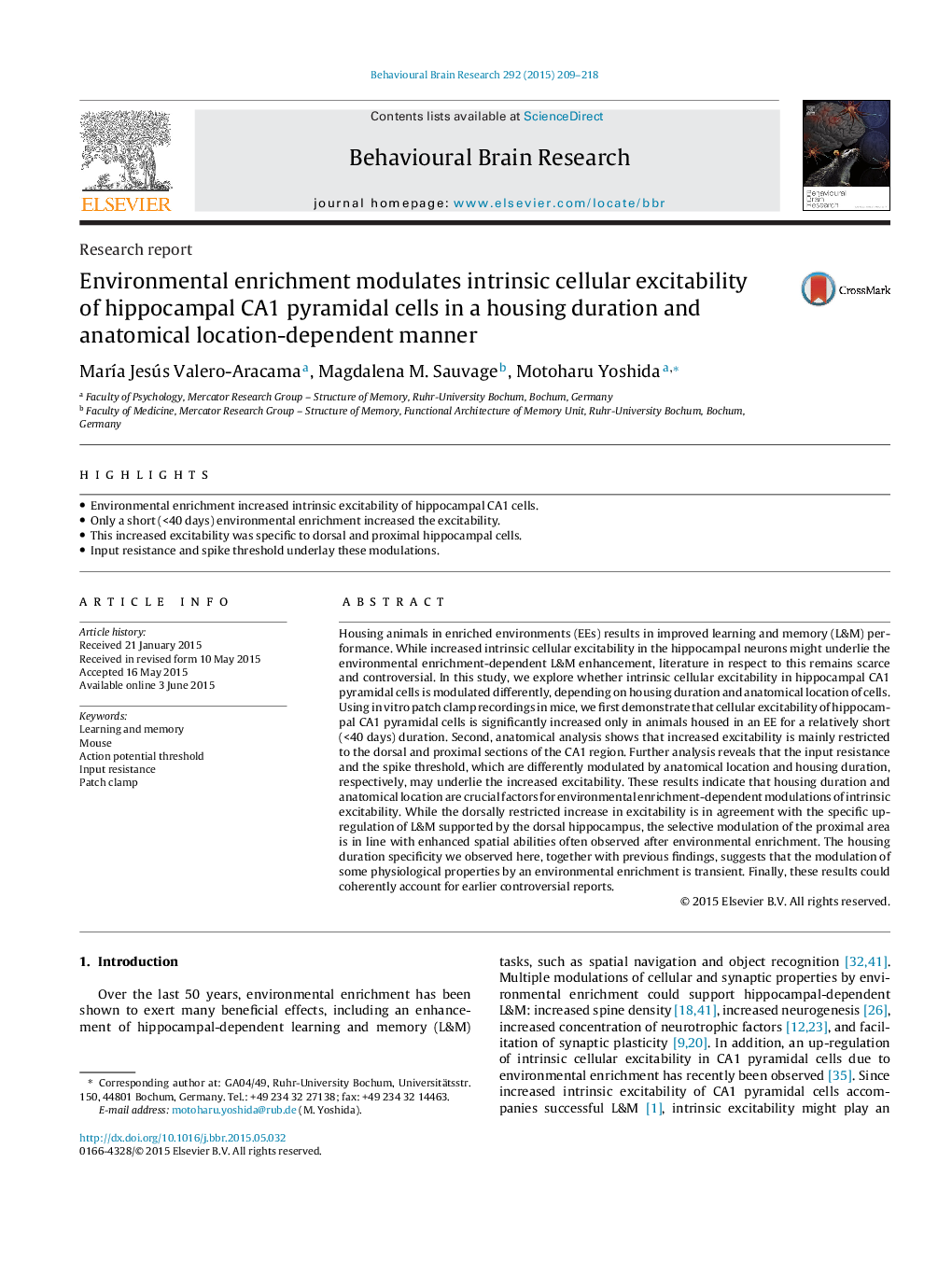| Article ID | Journal | Published Year | Pages | File Type |
|---|---|---|---|---|
| 6256499 | Behavioural Brain Research | 2015 | 10 Pages |
â¢Environmental enrichment increased intrinsic excitability of hippocampal CA1 cells.â¢Only a short (<40 days) environmental enrichment increased the excitability.â¢This increased excitability was specific to dorsal and proximal hippocampal cells.â¢Input resistance and spike threshold underlay these modulations.
Housing animals in enriched environments (EEs) results in improved learning and memory (L&M) performance. While increased intrinsic cellular excitability in the hippocampal neurons might underlie the environmental enrichment-dependent L&M enhancement, literature in respect to this remains scarce and controversial. In this study, we explore whether intrinsic cellular excitability in hippocampal CA1 pyramidal cells is modulated differently, depending on housing duration and anatomical location of cells. Using in vitro patch clamp recordings in mice, we first demonstrate that cellular excitability of hippocampal CA1 pyramidal cells is significantly increased only in animals housed in an EE for a relatively short (<40 days) duration. Second, anatomical analysis shows that increased excitability is mainly restricted to the dorsal and proximal sections of the CA1 region. Further analysis reveals that the input resistance and the spike threshold, which are differently modulated by anatomical location and housing duration, respectively, may underlie the increased excitability. These results indicate that housing duration and anatomical location are crucial factors for environmental enrichment-dependent modulations of intrinsic excitability. While the dorsally restricted increase in excitability is in agreement with the specific up-regulation of L&M supported by the dorsal hippocampus, the selective modulation of the proximal area is in line with enhanced spatial abilities often observed after environmental enrichment. The housing duration specificity we observed here, together with previous findings, suggests that the modulation of some physiological properties by an environmental enrichment is transient. Finally, these results could coherently account for earlier controversial reports.
